The Persons admitted Members of a Lodge must be good and true Men, free-born, and of mature and discreet Age, no Bondmen, no Women, no immoral or scandalous Men, but of good report…
The Constitutions of the Free-Masons, James Anderson (1734) [1723].

The Hon. Elizabeth Aldworth – ‘The Lady Freemason’ in Masonic regalia, from a mezzotint of 1811
IMAGE LINKED: wikimedia
Although several women had been introduced to Freemasonry prior to the 18th century, it was more by accident than invitation. Most Masons have heard the fable of the Hon.
Elizabeth Aldworth (née St Leger), who witnessed the proceedings of a lodge meeting held at Doneraile Court, County Cork in Ireland sometime between 1710-1718. The house was owned by her father, Arthur St Leger, 1st Viscount Doneraile.
The story goes that Elizabeth had fallen asleep whilst reading in the library within the house but awoke to the sound of voices coming from the next room. Due to building works being undertaken, she was able to remove several bricks from the wall and witnessed the ongoing ritual.
Understanding the importance of what she was seeing, she decided to retreat from the library, whereupon she was confronted by the Tyler. On discovery of the young lady, the lodge was obliged to Initiate her.
Elizabeth was henceforth known as ‘The Lady Freemason’ – the first recorded woman to be initiated into Regular Freemasonry.

Reception of a woman into a French Lodge of Adoption
IMAGE LINKED: wikimedia
This was obviously the exception rather than the rule; women were clearly excluded from Regular Freemasonry as stated in the Constitutions, but things began to change.
In the second half of the 18th century, France introduced the Rite of Adoption, which was essentially a Masonic rite but the number of degrees varied.
The first three rituals bore the same names as the Craft degrees, although the passwords and themes were quite different. Additional degrees were often added and according to La Grande Loge Féminine de France Autoportrait (Guy Trédaniel, Ed. 1995) ‘one of these rituals was that of the Queen of Sheba, under the name of “Princess of the Crown”, which was the highest of 10 degrees attested at the end of the 18th century’.
In 1774, the lodges of adoption came under the jurisdiction of the Grand Orient de France, and the published regulations show a system of four degrees (source: Mackey’s Lexicon of Freemasonry):
1. Apprentie, or Female Apprentice.
2. Compagnonne, or Journeywoman.
3. Maîtresse, or Mistress.
4. Parfaite Maçonne, or Perfect Masoness.

Engraving of the Reception of a Lady into the Order of Mopses, 1745
IMAGE LINKED: wikimedia
Other offshoots of Adoptive Freemasonry existed in Europe, including the bizarre Ordre de Mopses (Order of the Pug), whose emblem was, unsurprisingly, a pug dog.
Mackey’s Lexicon of Freemasonry (1844) states: ‘It is believed that it was founded in 1740 by Klemens August of Bavaria to bypass the papal bull In eminenti apostolatus of 1738. The constitution of the Order of the Pug allowed women to become members, as long as they were Catholic. The Pug was chosen as a symbol of loyalty, trustworthiness and steadiness.’

Seraphina Cagliostro (née Felichiani), Grande Maitresse of Cagliostro’s ‘Egyptian Rite’
IMAGE LINKED: wikimedia
Lodges were called ‘Lodges of Adoption’ and admitted Master Masons and their female relatives. Some examples include the Order of Woodcutters (Ordre des Fendeurs), a nautical themed lodge founded by the Chevalier Beauchaine in 1747.
Cagliostro’s Egyptian Rite also allowed women to participate, with his wife Seraphina at the helm as Grande Maitresse of the female lodges. Lodges of Adoption spread throughout Continental Europe but fell into decline in the 19th century after being declared unconstitutional by the Grand Orient de France.
They were subsequently revived as women-only lodges in the 20th century, later adopting the male degrees and becoming the Grande Loge féminine de France.
The Lodges of Adoption did not filter through to 18th century British lodges, or their American offshoots, and they remained male only. However, in the late 1800s, rites similar to those of Adoption emerged in the United States, allowing Masons and their female relatives to participate in ritual together.
These bodies, however, were more careful to discriminate between the mixed ritual and Regular Freemasonry, these concordant rites exist with the blessing and often the active support of regular Masonic lodges, although as they have their own ceremonies, some Grand Lodges view them as irregular.

They include: The Order of the Eastern Star; the Ladies’ Oriental Shrine of North America, The Order of the White Shrine of Jerusalem, Heroines of Jericho and Order of Cyrenes (offshoots of Prince Hall Freemasonry, these two orders are open to Royal Arch and Templar Masons respectively, together with their female relatives).
Outside the US, the Orde van Weefsters Vita Feminea Textura, or the Order of Weavers was founded in 1947. It was the creation of the wives of Dutch Freemasons. Their ritual system involves the symbolism of the tools of weaving, which they judged to be more appropriate for women than stonemasons’ tools.
Membership is open to any woman, of a least 18 years of age. There are now 17 lodges spread through the Netherlands and one in Paris, France.
FREEMASONRY FOR WOMEN AROUND THE WORLD
To date, mixed, or all-female lodges, are not officially recognised by the United Grand Lodge of England under its jurisdictions. The admission of women is now recognised in Continental (Grand Orient) jurisdictions.
However, there are many organisations around the globe that cater exclusively to women who would like to join Freemasonry – the list below is not exhaustive.
THE HONOURABLE FRATERNITY OF ANCIENT FREEMASONS (HFAF)
From the HFAF website:
Why a woman should become a Freemason
Why should you become a Freemason? There are many different and indeed altruistic reasons why anyone should become a Freemason, but there are three very special reasons why a woman would benefit. They are Friendship, Inspiration and Empowerment.
Friendship is important in today’s world, where so many people feel isolated due to breakdowns in relationships or having to relocate for work reasons. A lodge is like an emotional support network.
Freemasonry provides inspiration not only in its working but also through the many inspirational women amongst its members. We all need role models in our lives and Freemasonry provides opportunities to not only be inspired but also to become one of those who inspire others.
Empowerment is a word which encapsulates everything which Freemasonry can offer women. It is surprising in today’s world how many women lack self-esteem and do not value themselves highly enough. Freemasonry helps to build confidence and self-belief.
FFW University Lodge Scheme
Lodges which are part of the FFW University Lodge Scheme are particularly aimed at University undergraduates, staff and alumni and we offer discounted fees up to the age of 25.
Ideally, the students should be Initiated, Passed and Raised during their time at the University. When they leave university, they will be assisted to move to other Lodges if this is more convenient. During their time as a member of the University Lodge they will be encouraged to take part in the ceremonies for other candidates. For those of us who believe wholeheartedly in Freemasonry for Women this is a wonderful opportunity to reach out to more women.
Younger members are attracted by the stability of Freemasonry, its rituals and traditions all of which provide a contrast to the fast pace of modern life. There are at present more than 50 University Lodges working under the UGLE scheme. A recent conference on the Universities scheme discovered that at least 40% of the enquiries they received were from women. If the FFW Scheme proves successful it can only result in a more diverse membership and if we live up to our own masonic ideals, we should be able to retain this membership for life.
HFAF https://hfaf.org/hfaf-official/hfaf-university-lodge-scheme/
If you would like to find out more about Freemasonry for Women, please write to them at:
HFAF
402 Finchley Road
Childs Hill
London NW2 2HR
THE ORDER OF WOMEN’S FREEMASONRY (OWF)
From the OWF website:
The Honourable Fraternity of Antient Masonry was founded on 20 June 1908 and its first Grand Master and driving force was a man – the Rev Dr William Frederick Cobb. However, since 1912, the Grand Masters have all been women. The new Order at first included both men and women, but eventually the decision was taken in the early 1920s to restrict entrance to women only and no longer admit men as visitors.
Although a handful of loyal men remained in office, by 1935 we had become an exclusively female organisation and we remain so today. Another Masonic Order for women had been founded in 1913, and to avoid confusion in names we added ‘Order of Women Freemasons’ to our title in 1958. This is the name by which we are known today.
From a beginning with three small Lodges in 1908 we have gradually increased in numbers and locations. The 1950s and 1960s were particularly active in expansion, especially abroad. In 2005 a Lodge was opened at Fuengirola near Malaga in Spain.
Worshipful Brother Sue Warburton describes a typical week in the life of a lady freemason – this is day one…
https://www.owf.org.uk/news-blog/a-typical-week-in-the-life-of-a-lady-freemason-day-1/
OWF
27 Pembridge Gardens,
London W2 4EF
CENTRE DE LIAISON INTERNATIONAL DE LA MAÇONNERIE FEMININE (CLIMAF)
In 1982, the International Liaison Center for Women’s Masonry was founded in order to strengthen the links between the Grand Loge Féminine de France and the Grand Loge Féminine de Belgique.
Subsequently, other female Obediences joined this organization as active members: The Grand Female Lodge of Switzerland, in 1985, this as soon as the Union of Lodges working on Swiss territory was established.
The Grand Feminine Lodge of Portugal, the Grand Masonic Feminine Lodge of Italy, The Grand Feminine Lodge of Germany. In 2006, the Spanish Grand Lodge for Women joined CLIMAF and, after a few years of absence, the Grand Lodge of Women of Turkey applied for reinstatement in 2007. The Traditional Women Grand Lodge Pontus Euxinus joined CLIMAF as an intern in 2018.
These eight female Obediences represent a total of approximately 19,000 Sisters.
CLIMAF: http://www.climaf.eu/index.html
The eight Obediences include:
GLFB-VGLB Female Grand Lodge of Belgium
GLFS Grand Lodge for Women of Switzerland
GLMFI Grand Masonic Feminine Lodge of Italy
GLFDA Women’s Grand Lodge of Germany
GLFP Grand Feminine Lodge of Portugal
Further Research:
Wikipedia: https://en.wikipedia.org/wiki/Freemasonry_and_women
Conder, Edward “The Hon. Miss St. Leger and Freemasonry” Ars Quatuor Coronatorum, vol. viii (1895), pp. 16–23
Mackey’s Lexicon of Freemasonry, 1844, entry for “Mopses”, retrieved 18 March 2013
The Constitutions of the Free-Masons, James Anderson (1734) [1723]
Article by: Philippa Lee. Editor

Philippa Lee (writes as Philippa Faulks) is the author of eight books, an editor and researcher.
Philippa was initiated into the Honourable Fraternity of Ancient Freemasons (HFAF) in 2014.
Her specialism is ancient Egypt, Freemasonry, comparative religions and social history. She has several books in progress on the subject of ancient and modern Egypt. Selection of Books Online at Amazon
Recent Articles: Women Freemasons
 Freemasonry and Women's Rights - P4 The Freemason judge who ruled women were 'persons' |
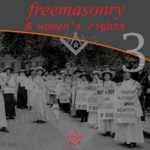 Freemasonry and Women's Rights - P3 Who embraced and influenced the women’s rights and suffragette movements in Europe in the late nineteenth and early twentieth century |
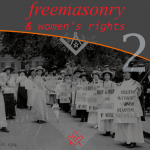 Freemasonry and Women's Rights - P2 Second part, in the introductory series exploring the history of mixed, Co- and female Freemasonry, and how the fraternity and its members helped progress the emancipation and rights of women. |
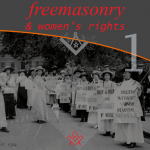 Freemasonry and Women's Rights - P1 A two-part introductory series exploring the history of mixed, Co- and female Freemasonry, and how the fraternity and its members helped progress the emancipation and rights of women. |
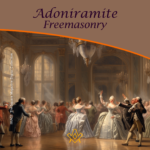 Adoniramite Freemasonry, also known as Adoptive Freemasonry, emerged in 18th-century France as a unique initiation system for women. Mimicking the secrecy and symbolism of regular Freemasonry, these Lodges of Adoption attracted noblewomen, literary figures, and even royalty. Explore the origins, rituals, and controversies surrounding this intriguing branch of Freemasonry. |
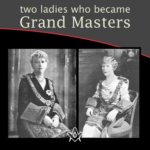 Two ladies who became Grand Masters Who were the two ladies, mother and daughter who become Grand Masters of Honourable Fraternity of Ancient Freemasons |
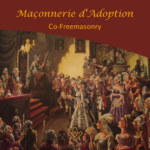 A look at Adoptive Lodges that were established in France for the initiation of females; a short Extract from the Encyclopedia Of Freemasonry |
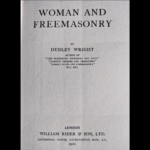 Published in 1922, this interesting, and whimsical book was penned by Dudley Wright |
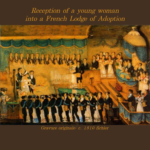 Look at the History of Women in Freemasonry. Although Several women had been introduced to Freemasonry prior to the 18th century, it was more by accident than invitation. |
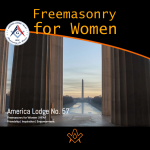 The Great American Experiment, a film by HFAF documenting the Consecration and Installation of Officers of America Lodge No. 57 on May 25, 2019 |
masonic knowledge
to be a better citizen of the world
share the square with two brothers

click image to open email app on mobile device











